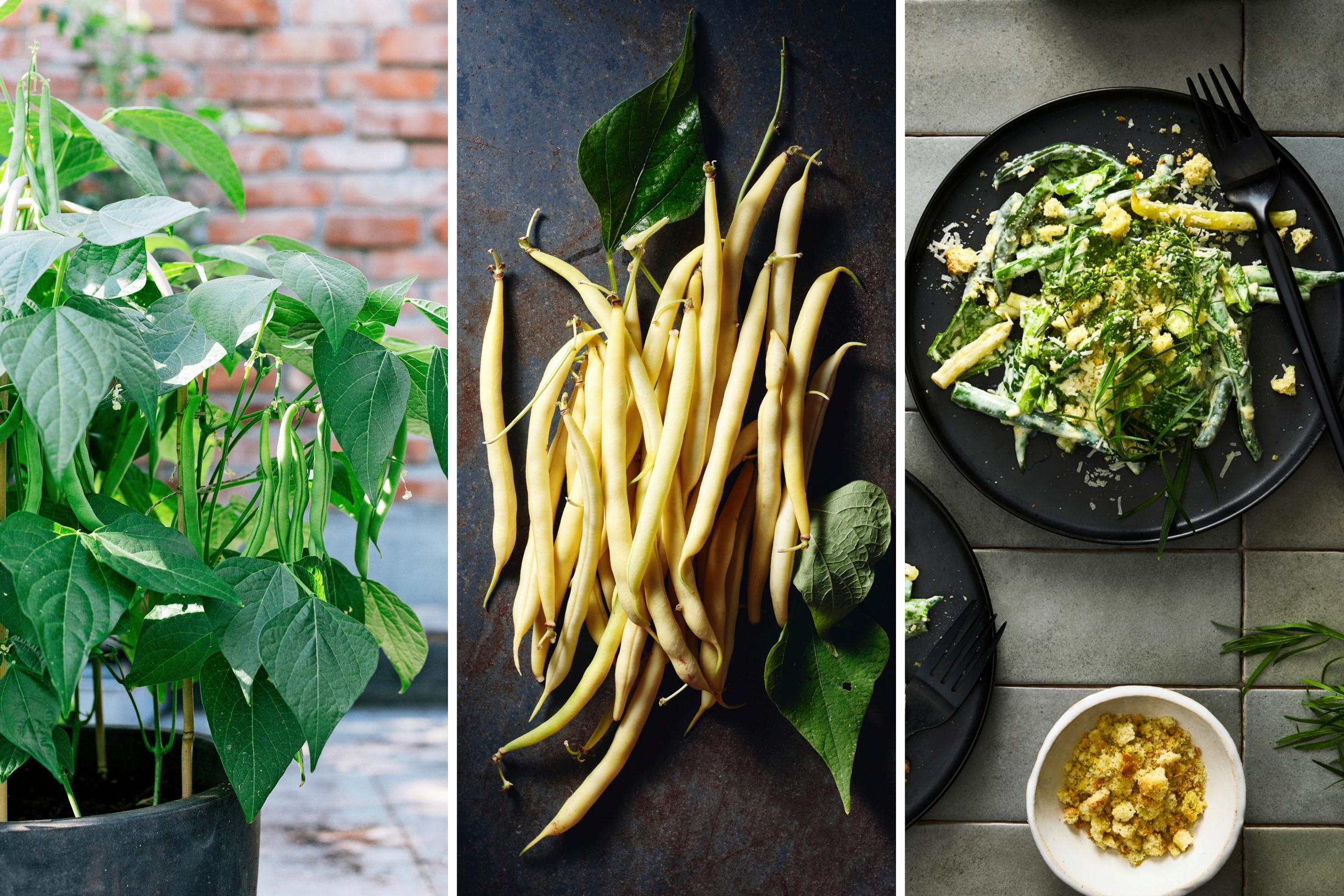
10 reasons to love (and grow!) beans
Beans look gorgeous and taste delicious. Plus, these lush legumes improve your vegetable garden, your diet, and the world. Is there any reason not to grow beans?
1. Beans are natural nitrogen factories
Among all nutrients, nitrogen is what plants need most. The natural nitrogen reserves within reach of roots are often limited, while there is plenty of nitrogen in the air. However, plants cannot directly use gaseous nitrogen from the atmosphere. Legumes like beans solve this challenge with an underground nitrogen factory, a symbiosis between plant and bacteria. Bacteria living in a bean’s root nodules can capture nitrogen from the air and convert it into a form plants can use. When more nitrogen compounds are produced than the host plant needs, the surplus remains in the soil for other plants. These nutrients still benefit the next year’s crop in the rotation.
2. Corn, beans, and squash—a trio that supports one another
Corn, beans, and squash form a classic combination used by Indigenous peoples of the Americas. In the eastern parts of North America, these important crops were called the Three Sisters. A Cherokee myth tells how strong Corn Girl, swift Bean Girl, and hungry Squash Girl finally found happiness when they learned to grow together. The corn grew tall and offered support to the bean. The squash spread out its leaves, protecting everyone’s feet from weeds, and the bean nourished its sisters with good food.

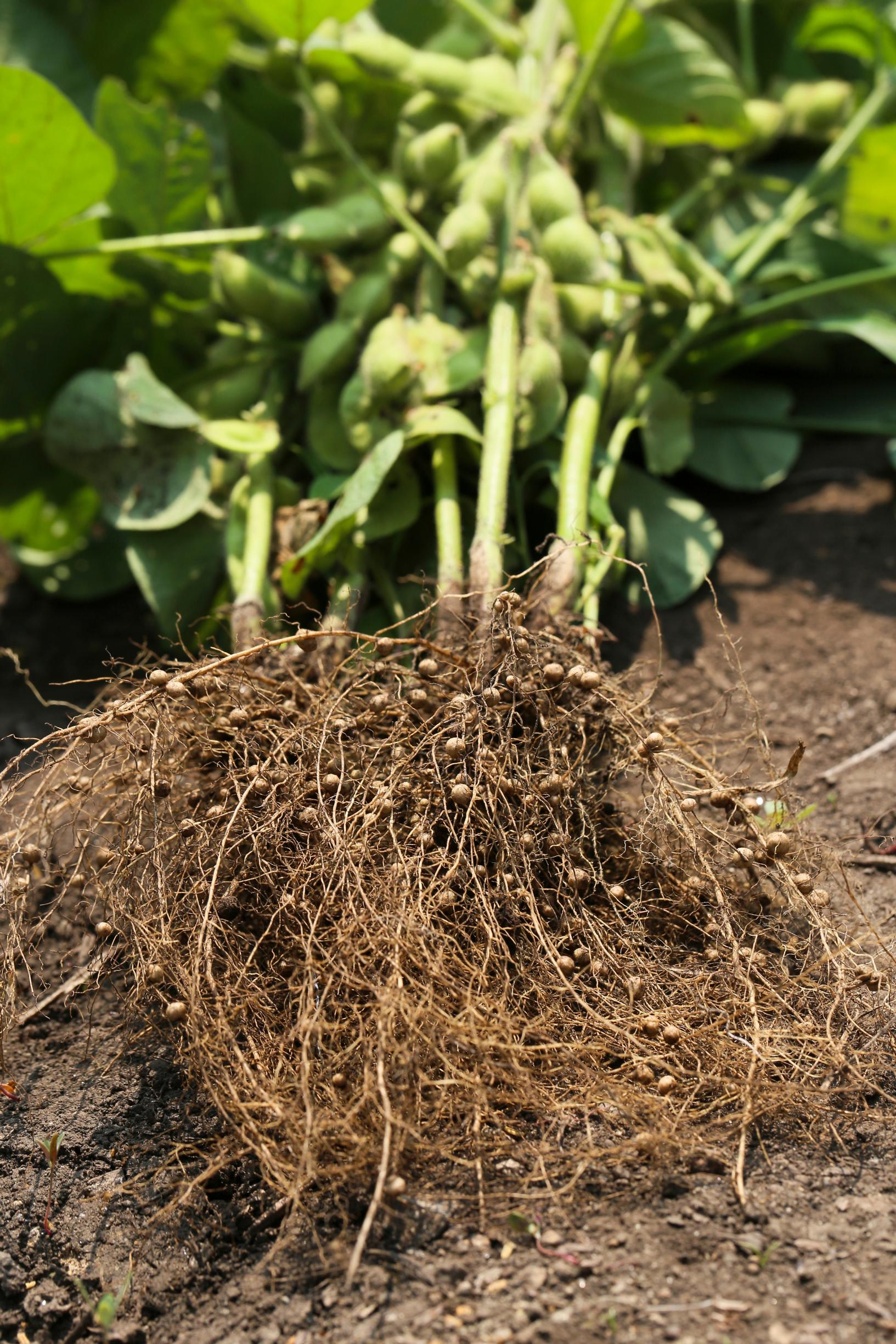
3. Also suited to balconies and patios!
Beans don’t need a dedicated garden plot: they thrive in containers too. Start seedlings in nursery pots or sow the seeds directly in their final container, leaving about a hand’s width between them. Pick a large, deep container (at least 30 cm or 12 inches) with drainage holes for these vigorous, deep-rooted plants. Containers with thick walls help keep the soil evenly warm. Compact bush beans are particularly good for containers, but if there’s enough room, tall pole and runner beans will do well too.
4. Thanks to their valuable plant-based protein, beans are the food of the future.
5. Plenty of varieties
The beans you find in frozen vegetable mixes are almost always green. In your own bean patch, you can choose from many colors that delight the eye. Dark purple, pale, and yellow pods brighten up the bean bed and look appetizing even while growing. The most colorful kinds are Borlotto varieties, popular in Italy, whose pods and seeds are both marbled in red and white.

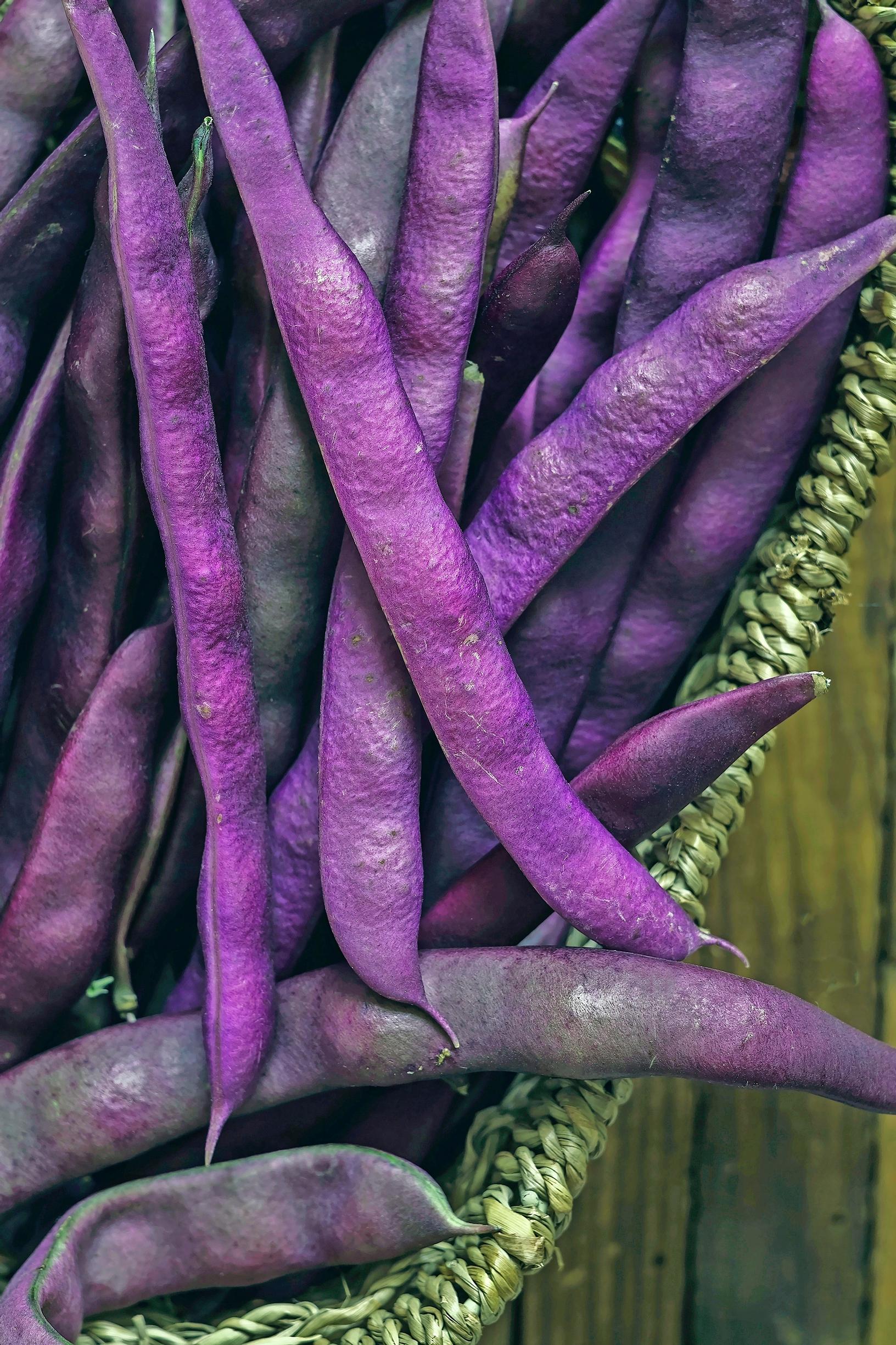
Check out this article: Beans for your yard and containers! We selected the best bean varieties

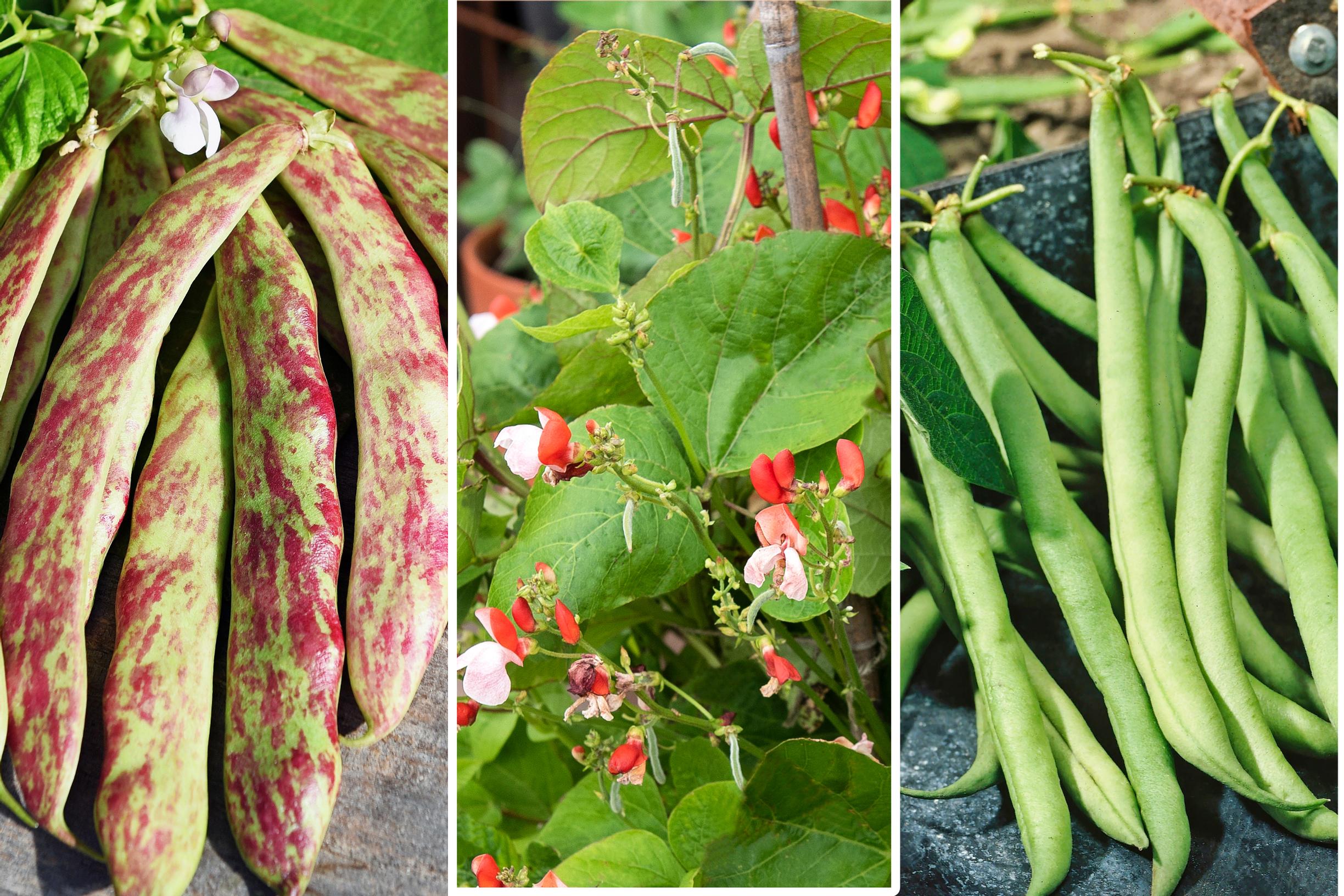
6. Even a single plant produces new seeds
Plan for the next planting season by leaving part of your crop on the plants to mature and form seeds. Common beans are self-pollinating, so even one plant can produce seeds. Different varieties may still cross-pollinate, so to avoid mixing, keep different varieties at least 10 meters (33 feet) apart.
7. Beans make the world a better place
Eating more vegetables lowers climate impacts and helps reduce waterway eutrophication. Seasonal produce is especially recommended, and local beans are a more sustainable choice than imported soy. Data from the Natural Resources Institute Finland (Luke) shows that the climate footprint of beans is only a fraction of that of many other foods. Homegrown beans are local food—and climate heroes.
8. Beans enjoyed the spotlight in 2016, when the UN declared it the International Year of Pulses.
9. Beans are true protein powerhouses
Beans are excellent because they are high in fiber and packed with beneficial nutrients. Fiber benefits digestion, while vitamins and minerals help the entire body. Their greatest strength, though, is their protein content. Most of the protein is in the seed, so you may want to harvest some of the crop as seeds rather than pods. Plant-based proteins can complement an omnivorous diet or fully replace animal-based proteins.

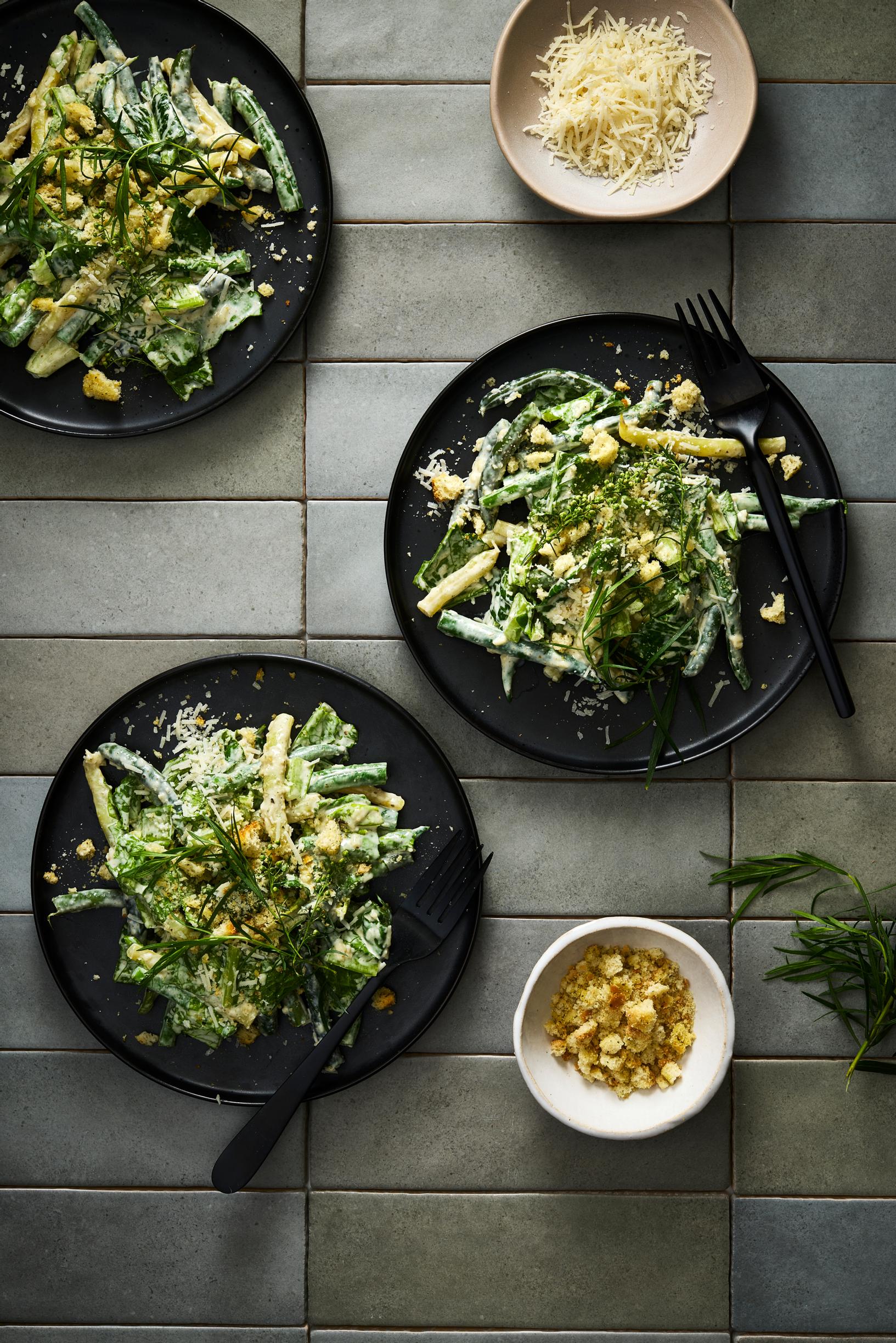
10. Beans grow quickly into striking plants
Pole beans and runner beans really stretch toward the sky. In the folk tale, Jack climbs a beanstalk all the way to the clouds, but real beans don’t reach quite that high. Even a three-meter support might still not be enough.

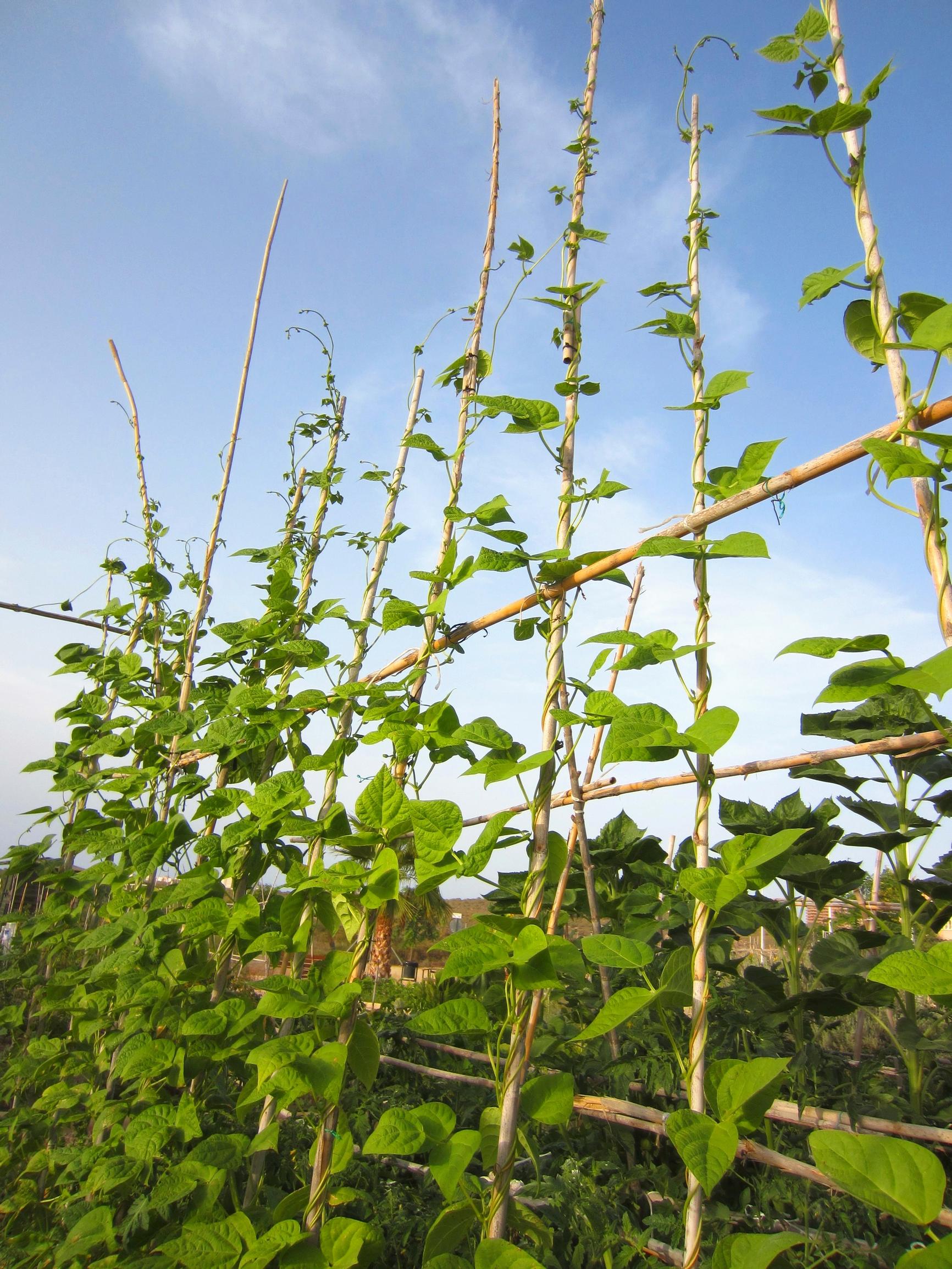
Did you know about beans?
The word ‘bean’ appears as a species name across many different plant genera. However, the cold-hardy and robust broad bean is, like the field vetch, classified into the genus Vicia. The mung bean, known from the dry goods aisle, and the cowpea, which is usually grown in greenhouses due to its cold sensitivity, are both long beans in the genus Vigna. The soybean and the climbing hyacinth bean each belong to their own genus. True beans have a genus of their own, called Phaseolus. The largest group in that genus is the common bean with its many variants, and the genus also includes runner beans and lima beans.
Phaseolus beans originate from Central America and the Andean region of western South America. Wild species gathered from nature were first cultivated in these regions about 10,000 years ago, making beans one of humanity’s oldest crops. Easy to grow and rich in nutrients, beans were vital to the Inca Empire in Peru and eventually to the eastern parts of North America as well.
Europeans first encountered American beans after crossing the Atlantic. When Columbus arrived in the Caribbean in 1492, he saw fields of unfamiliar plants. Spanish and Portuguese explorers brought beans to Europe along with many other New World crops. The new species somewhat resembled the cowpea, already grown in Europe and known in ancient times by the name fasiolus. Later, this old name was reassigned to the New World bean genus in the form Phaseolus.
Today, beans are grown in almost every corner of the world, since this annual plant can produce a crop even in cooler climates. Part of the harvest is gathered young, as green beans, while most is collected as fully matured beans. Green beans are popular, for instance, in China, while dried and preserved beans remain staples where beans originated, in Mexico.


